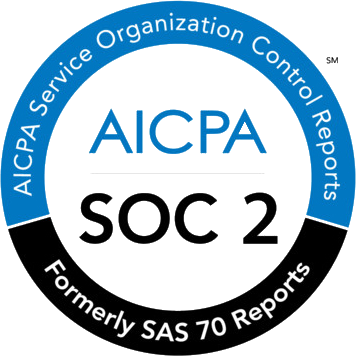Parking space management is a skill that is often overlooked, but it is an essential aspect of creating a pleasant and safe environment for drivers and pedestrians alike.
When it comes to maximizing your parking lot and the spaces within it, it’s not just about adding more spaces.
It’s about strategically allocating and utilizing existing parking spots. Ensuring that every driver who needs space can find one and that pedestrians can navigate the area safely.
In this blog, we are going to look at how you can maximise your parking lot by strategically harnessing the power of technology.
Table of Contents
ToggleUnderstanding Parking Space Management
In its simplest form, parking space management is the process of optimizing the usage of a parking area to provide the desired level of parking service in an efficient and cost-effective manner.
Effective parking management considers the needs of all users, including drivers, pedestrians, and business owners. In addition, it takes into account factors such as traffic flow, safety, accessibility, and sustainability.
Ready to Revolutionize Your Parking Management?
Find out how Wayleadr can help you master the art of parking space management.
Learn MoreThe Importance of Efficient Parking
Efficient parking management ensures that drivers can find parking quickly and easily, reducing congestion and improving traffic flow. It also enhances safety by reducing the number of vehicles circling the area in search of a parking spot.
A well-managed parking area also promotes accessibility for all users. This includes the elderly and people with disabilities, by providing appropriate parking spaces and accommodations.
Moreover, efficient parking is crucial for businesses that rely on customer traffic. A lack of available parking can deter potential customers from visiting a business, resulting in lost revenue. On the other hand, a well-managed parking area can attract more customers and improve the overall customer experience.
Key Components of Parking Space Management
An effective parking management plan should take into account several key components, including assessing parking needs, implementing effective strategies, and enhancing the overall parking experience. Each of these components plays a critical role in maximizing the efficiency of a parking area.
Assessing parking needs involves analyzing the demand for parking in a particular area. Then, determining the appropriate number and types of parking spaces to meet that demand. This may involve conducting surveys, analyzing traffic patterns, and considering the needs of different user groups.
Implementing effective strategies involves identifying and implementing measures to optimize the usage of available parking spaces. This may include measures such as dynamic pricing, which adjusts parking fees based on demand, or the use of technology. This could such as parking sensors and mobile apps such as Wayleadr, to improve the parking experience.
Enhancing the overall parking experience involves considering the needs of all users and providing amenities such as lighting, security, and wayfinding signage to improve safety and accessibility. It may also involve incorporating green infrastructure such as rain gardens and permeable pavement to improve sustainability.
In conclusion, effective parking space management is essential for ensuring efficient and cost-effective use of parking areas while considering the needs of all users. By assessing parking needs, implementing effective strategies, and enhancing the overall parking experience, parking managers can maximize the efficiency of parking areas and improve the overall user experience.
Assessing Your Parking Needs
Before implementing any parking management plan, it’s important to assess your parking needs. This involves identifying parking demand and analyzing parking utilization and turnover. By doing so, you can ensure that you have enough parking spaces for visitors and customers, while also maximizing the use of your available parking resources.
Identifying Parking Demand
The first step in assessing your parking needs is to determine how many parking spaces you need to provide. This can be done by estimating the number of cars that will visit the area during peak hours or by conducting a survey of parking usage. In addition to the number of visitors, you should also consider the type of activities taking place in the area. For example, a shopping mall may require more parking spaces than a park due to the higher number of cars expected to park there.
Analyzing Parking Utilization
Analyzing parking utilization involves determining how parking spaces are being used. This typically involves collecting data on the number of vehicles parked during different times of the day and week and then using that information to identify patterns and areas where parking demand may be higher than supply.
By analyzing parking utilization, you can also identify any parking spots that are underutilized. Thus, allowing you to consider reallocating them to areas where parking demand is higher.
Moreover, it’s important to consider the type of parking spots available.
Incorporating Sustainable Practices
Evaluating Parking Turnover
Parking turnover refers to the rate at which parking spaces are being used. Evaluating parking turnover can help identify how long drivers are staying in the area and whether there is a need for time-limited parking or paid parking options. By implementing time-limited parking, you can encourage drivers to vacate their spots after a certain period of time, thereby increasing the availability of parking spaces for other drivers.
Furthermore, paid parking options can be implemented in areas where parking demand is high and turnover is low. This can help generate revenue for the parking management system, which can be used to improve the parking facilities or provide additional services to visitors and customers.
Overall, assessing your parking needs is a crucial step in implementing an effective parking management plan. By identifying parking demand, analyzing parking utilization, and evaluating parking turnover, you can ensure that your parking resources are being used efficiently and effectively.
Implementing Effective Parking Strategies
Once you have assessed your parking needs, you can start implementing effective parking strategies. These strategies should focus on designing an optimal parking layout, utilizing technology for parking management, and implementing parking policies and regulations.
Designing an Optimal Parking Layout
Designing an optimal parking layout involves creating a layout that maximizes the use of available space and minimizes traffic congestion. This may involve redesigning existing parking areas or building new ones. It’s important to consider factors such as the size and shape of vehicles, the number of spaces needed, and accessibility requirements.
One important factor to consider when designing a parking layout is the type of vehicles that will be using the parking area. For example, if the parking area will be used primarily by larger vehicles, such as trucks or SUVs, it may be necessary to allocate more space for each parking spot to ensure that drivers have enough room to maneuver their vehicles.
In addition to vehicle size, it’s also important to consider the flow of traffic within the parking area. One effective strategy is to use a one-way traffic flow system, which can help reduce congestion and improve safety. This involves creating designated entrance and exit points, as well as clearly marked driving lanes.
Join the Parking Revolution with Wayleadr!
Optimize your parking layout, embrace smart parking technology, and elevate your user experience. Begin your free trial now and unlock a smoother parking experience.
7 Day Free TrialUtilizing Technology for Parking Management
Technology can play a significant role in parking management. This includes using sensors to track the number of vehicles in a parking area, implementing mobile payment options, and providing real-time parking availability information. These tools can help drivers find parking quickly and easily, reducing congestion and improving the overall parking experience.
One example of technology that can be used for parking management is license plate recognition. This involves using cameras to capture images of license plates as vehicles enter and exit the parking area. The system can then use this information to track the number of vehicles in the parking area and ensure that only authorized vehicles are using the space.
Another effective technology for parking management is mobile payment options. This allows drivers to pay for parking using their smartphones, eliminating the need for physical payment machines and reducing the time it takes to park.
Implementing Parking Policies and Regulations
Implementing parking policies and regulations can help ensure that parking spaces are used appropriately and efficiently. This may include time-limited parking, permit parking, or paid parking options. It’s important to communicate these policies clearly to drivers and enforce them consistently to maximize their effectiveness.
One effective policy is time-limited parking, which involves setting a maximum time limit for parking in a particular area. This can help ensure that parking spaces are available for a larger number of drivers, and can also help reduce congestion by encouraging drivers to move their vehicles after a certain amount of time.
Another effective policy is permit parking, which involves allocating specific parking spaces to certain groups of drivers, such as employees or residents. This can help ensure that parking spaces are available for those who need them most, and can also help reduce the number of unauthorized vehicles in the parking area.
By implementing effective parking strategies, you can help ensure that your parking area is safe, efficient, and easy to use. Whether you’re managing a large parking lot or a small parking area, these strategies can help you make the most of your available space and improve the overall parking experience for drivers.
Enhancing the Parking Experience
Finally, it’s important to enhance the overall parking experience to promote safety, accessibility, and sustainability. This involves prioritizing safety and security, ensuring accessibility for all users, and incorporating sustainable practices. However, there are several other factors that can contribute to enhancing the parking experience.
Prioritizing Safety and Security
Parking areas can be vulnerable to crime and accidents. Prioritizing safety and security involves implementing measures such as lighting and surveillance cameras to deter criminal activity and ensure that drivers and pedestrians feel safe and secure while using the parking area.
Additionally, providing clear signage and markings can help prevent accidents and ensure that drivers know where to park and how to navigate the parking area safely.
Ensuring Accessibility for All Users
Accessibility is a critical component of parking space management. This involves providing appropriate parking spaces and accommodations for people with disabilities, the elderly, and other users who may have unique needs.
Ensuring accessibility can help promote inclusivity and improve the overall user experience. In addition to providing accessible parking spaces, businesses can also consider providing shuttle services or other forms of transportation for users who may have difficulty walking long distances.
Sustainability is becoming an increasingly important consideration in parking space management. Incorporating sustainable practices such as providing electric vehicle charging stations and promoting alternative transportation options can help reduce the environmental impact of parking areas and promote sustainable behaviour.
Additionally, businesses can consider using permeable pavement or green roofs to help manage stormwater runoff and reduce the heat island effect.
Improving User Experience
Improving the overall user experience involves considering factors such as convenience, comfort, and aesthetics. Businesses can consider providing covered parking areas to protect users from inclement weather, as well as providing amenities such as restrooms and refreshment stations.
Additionally, businesses can consider incorporating art or other design elements into the parking area to enhance its visual appeal and create a more welcoming environment.
Maximizing Efficiency
Maximizing efficiency involves using technology and data to optimize the use of parking spaces. Businesses can consider using sensors or other technology to monitor parking space usage and availability, as well as using dynamic pricing to encourage users to park in less crowded areas.
Additionally, businesses can consider implementing a parking management system, such as Wayleadr that allows users to reserve parking spaces in advance, reducing the time and stress associated with finding a parking spot.
Maximizing the efficiency of parking space management requires careful planning and consideration of several key factors. By assessing parking needs, implementing effective strategies, and enhancing the overall parking experience, businesses can create a safe, accessible, and sustainable environment that meets the needs of all users.
Looking for some real-life examples? Check out how companies like Colliers International, Version 1 & Ayre Chamberlain Gaunt solved their parking problems.
Parking causing issues? Join industry leaders from companies like Sanofi, Indeed.com & CBRE, schedule a demo with Wayleadr.com today and solve your parking problems in the click of a button.





